Guide to Grading Between Sizes (aka Blending Sizes)
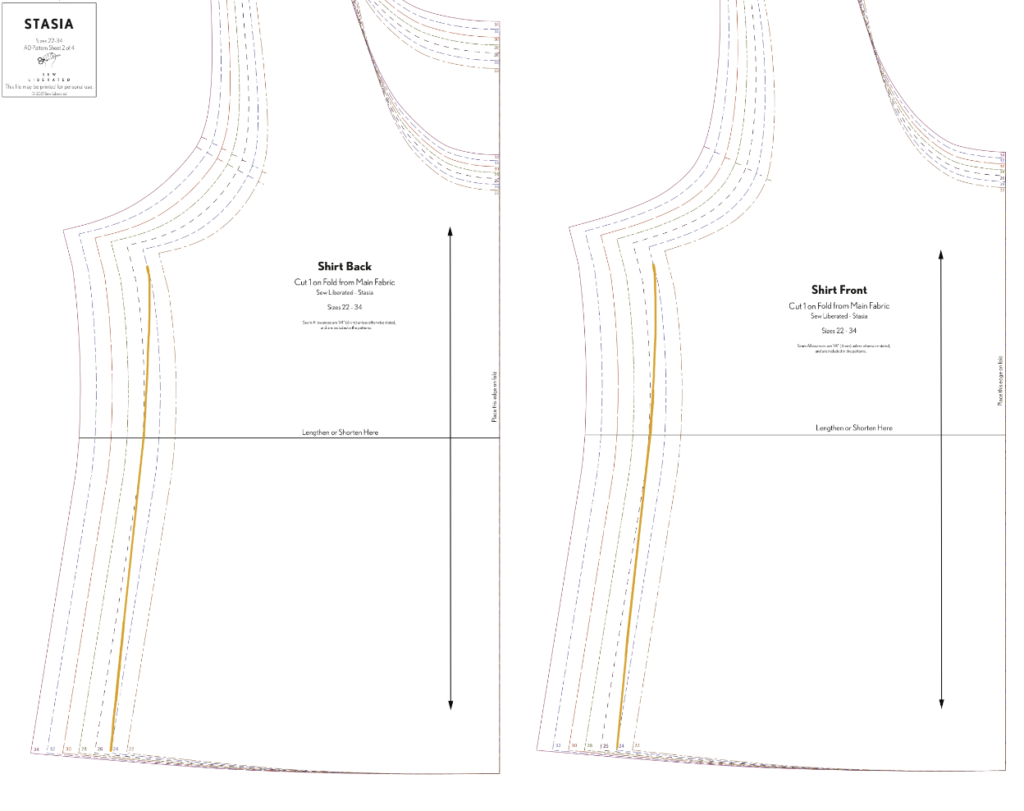
Grading Between Sizes is combining two or more sizes from a graded nest to customize the fit of the pattern. Knowing how to grade between sizes (or blend sizes) is a simple way to customize fit to your unique shape when your body measurements fall into more than one size on the size chart. If you think about “grade” in other contexts, it often refers to a slope or level, like how steep a road is. So applying this to the sizes in a pattern, grading between them means making a smooth line between two points. You’ll often do this between landmarks like the waist and hip, or the bust and waist.

First, like at the beginning of any project, take your measurements
Bodies shift, so this is a crucial first step! Wear the same undergarments that you plan to wear with the finished garment. If you are making a more fitted garment, take standing and seated waist and hip measurements, so you can be sure that you’ll be able to sit comfortably.
Then find the measurements closest to yours on the body measurement chart
If I have my instructions on paper, I’ll circle the relevant measurements on the body measurement chart and write my complete measurements and the date in the margin. I’ll mark up my PDF if I’m reading the instructions on a screen, and write them on one of the pattern pieces as well.
Now that you know the potential size range that you are working within, review the finished measurements (or take them yourself from the pattern if there’s no chart available). It’s really important to pay attention to the body measurement chart, the finished measurement chart, and the style of the garment when you’re making sizing decisions. Understanding the ease of the garment, your desired fit, and the intended style will help you decide how much leeway you have within the style and measurements to be in different sizes without making changes.
If you are using a tissue pattern, or it’s already printed, I’d suggest tracing off the relevant sizes. From your paper (if you can reprint in case you make a mistake!) or using your tracing, loosely cut out the pieces, leaving extra paper around the edges. If you haven’t printed your pattern yet, print all of the relevant sizes, so that you can see them all as you work!
Let’s take an example
Say I’m making the Arenite pants. This is a pull-on style with an elastic waist, so the hip measurement takes priority here. The pants need to pull over the hips, so the largest circumference measurement needs to take precedence in order to be able to get the pants on. I can make the waist smaller by reducing the elastic length when I’m sewing. The exception to this guideline is if my waist measurement were to be larger than my hip. In this case, the waist measurement would determine my size, and I would make a muslin to decide if the hips need to be taken in a little.
Let’s consider another example
This time for a top-half garment. The Hinterland dress has darts, a waist seam, and a gathered skirt. If my hip were to be a size or two larger than my waist, I could either check the finished measurements and decide that the available ease is fine for the difference in size, or I could combine the skirt piece from the size up with the bodice that fits my bust and waist measurements. This is a very simple way of blending sizes, and works well on dresses with gathered skirts.
Now let’s consider the Hinterland dress again, this time with a waist measurement that is a size or two larger than the size for my bust measurement. Once I’ve confirmed that my bust measurement is a match for the dressmaker’s cup size of the pattern, I’d think about whether I want to blend sizes at the waist. First checking the finished measurements, I decide that I want to use the waist portion of the next size up from my bust.
To blend the sizes, I need to locate the bust and waist on the pattern. That’s pretty clear on this bodice, so I’m going to blend below the bust dart. On the back, I can connect the smaller size with the next size up with a smooth line.
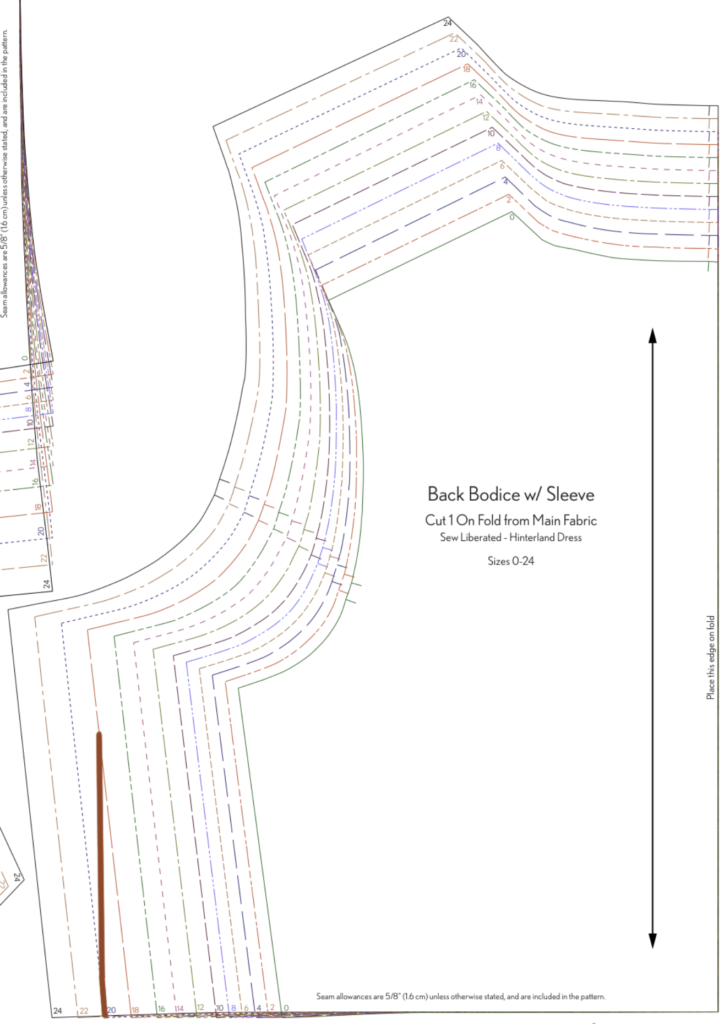
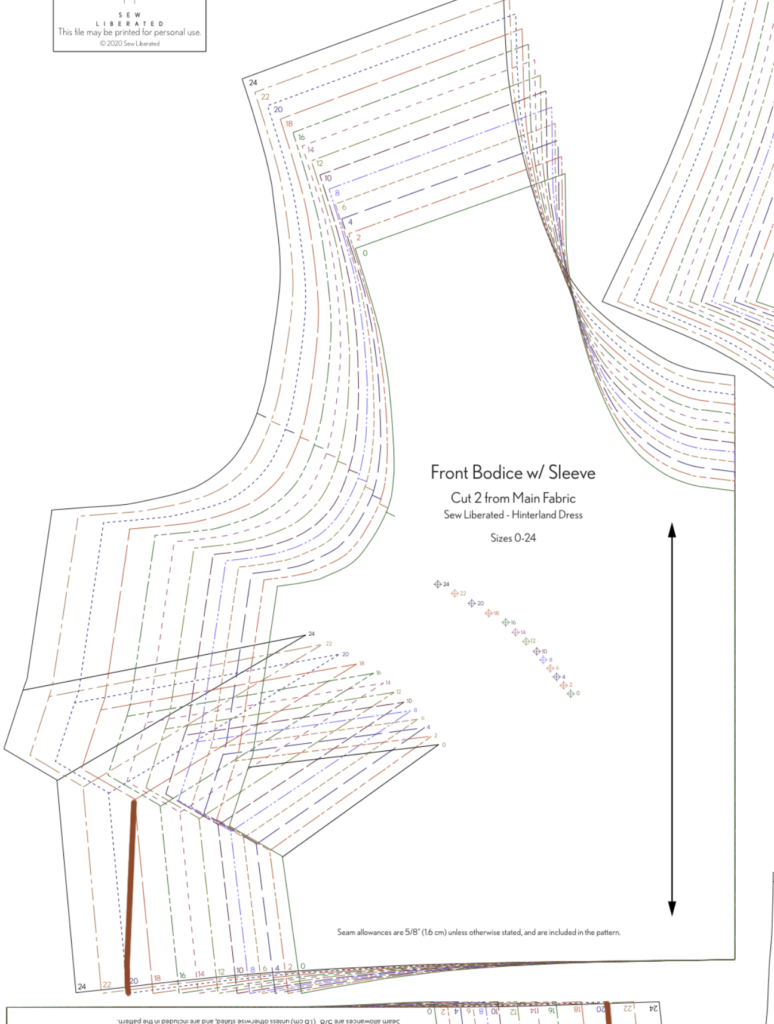
On the front, I’ll connect the sizes with a smooth line, then fold the dart to confirm my line and the dart intake’s shaping.
Then I’d compare the front and back side seams to check that the adjustments are consistent with each other. I would choose the skirt size that matches my waist size for a true-to-pattern amount of grading, or whatever size fits my hip if that’s my priority.
In short
- find the landmarks on the pattern
- blend smoothly in between the sizes
- true the seams to check your work
If there are intersecting pieces, like waistbands, facings, or pocket pieces, line them up with the adjusted pieces to make sure that everything will fit! Pay attention to working in a balanced manner as well – if you’re adding to the knee or calf of a pant leg, add equal amounts on each side. Add equal amounts to the front and back at the side seams (unless you’re strategically choosing to add to the front or back)
If you’re grading between more than 3 sizes, you may need to employ some different techniques to maintain the balance of the style and avoid pulling or distortion of the fabric. I almost always recommend making a toile/muslin, and this case it’s a must!
Let’s look at two more garments, just to see how this idea works in other styles.
On a pencil skirt, a larger hip than waist looks like this:
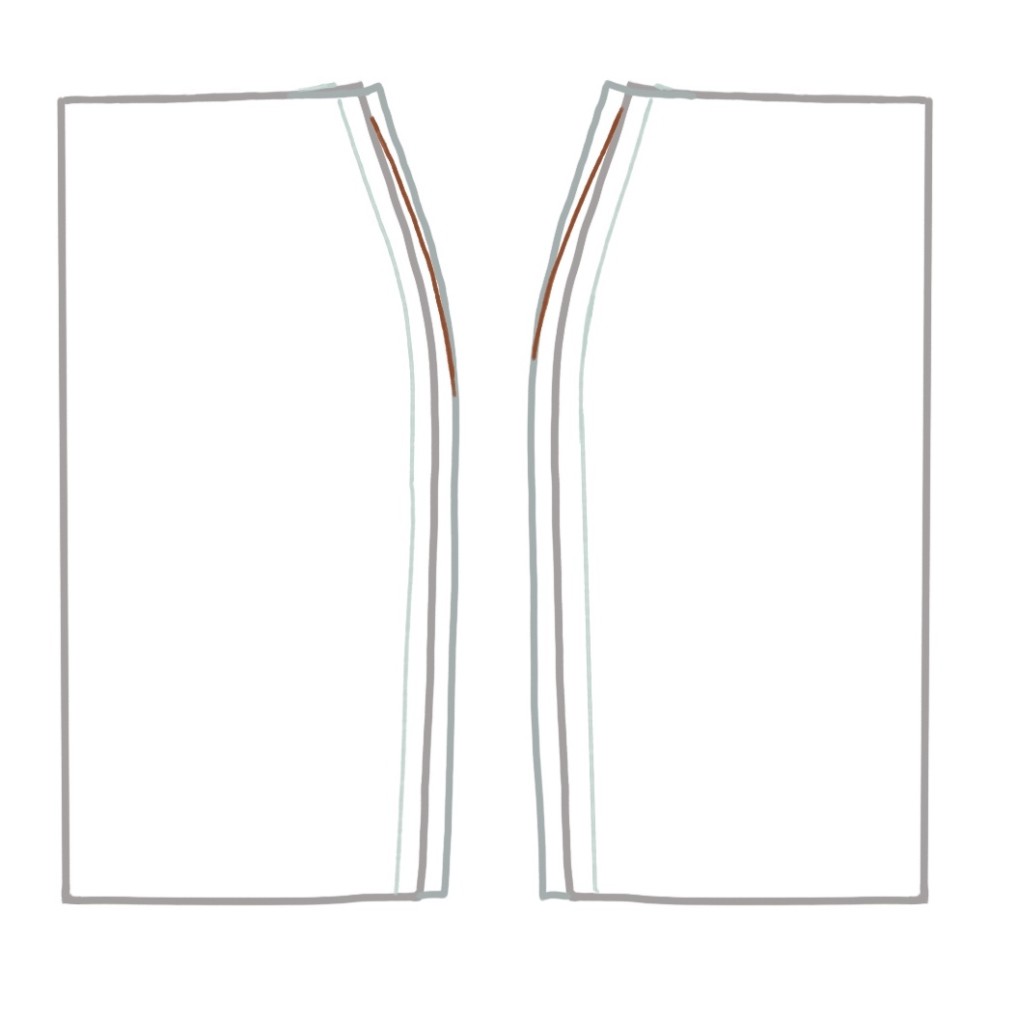
and a larger waist than hip looks like this:
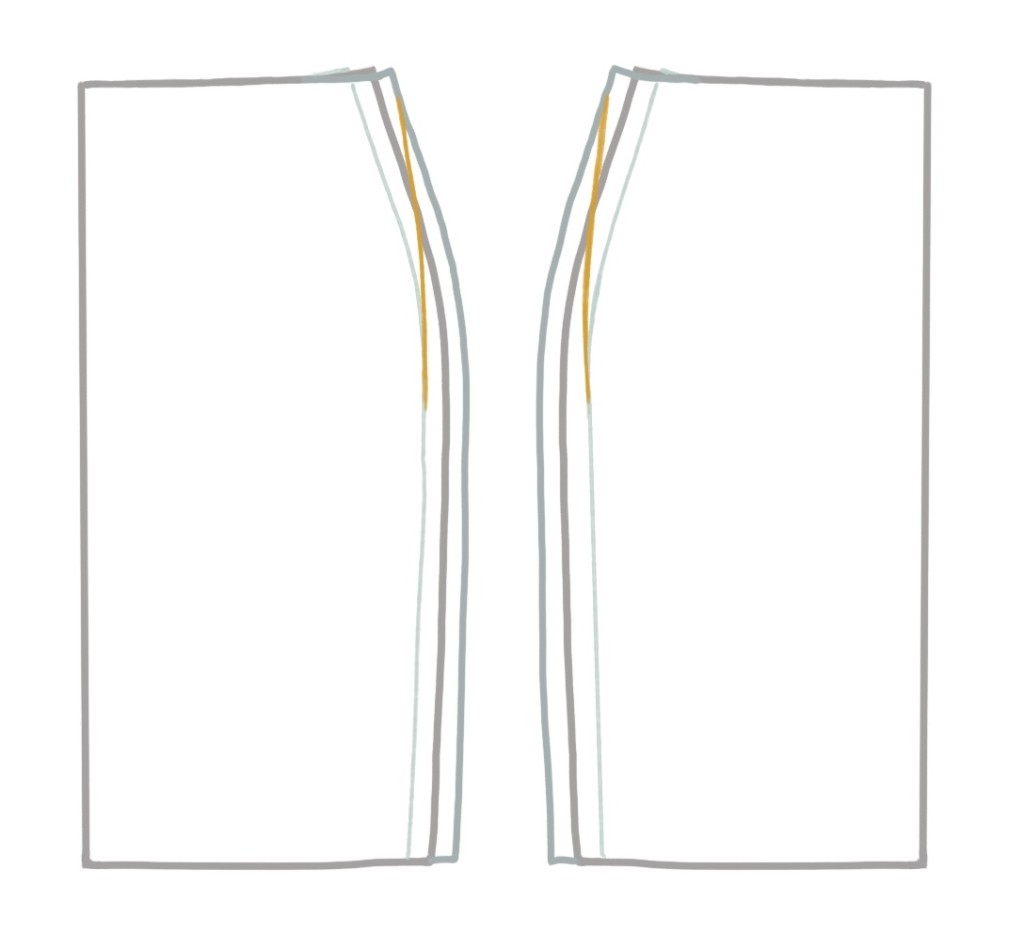
On a fitted tee like the Stasia tee, a larger waist than bust and hip looks like this:

a smaller hip than waist and bust looks like this:
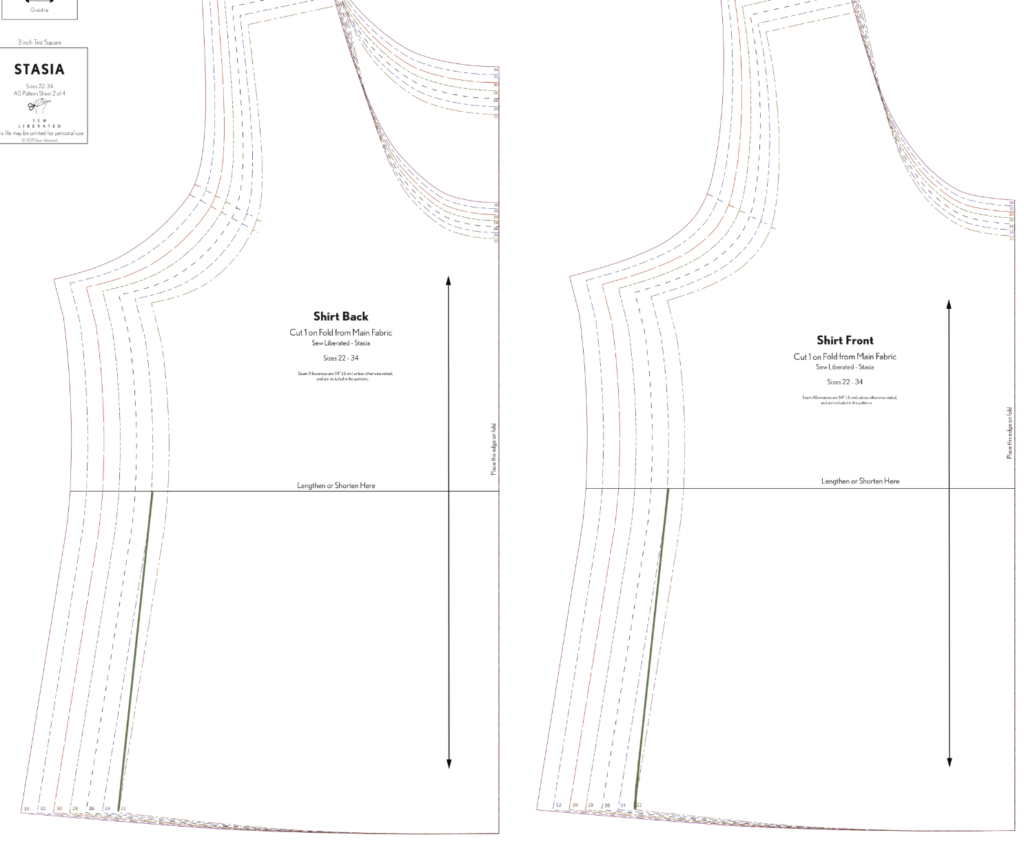
and a larger waist and hip than bust looks like this:
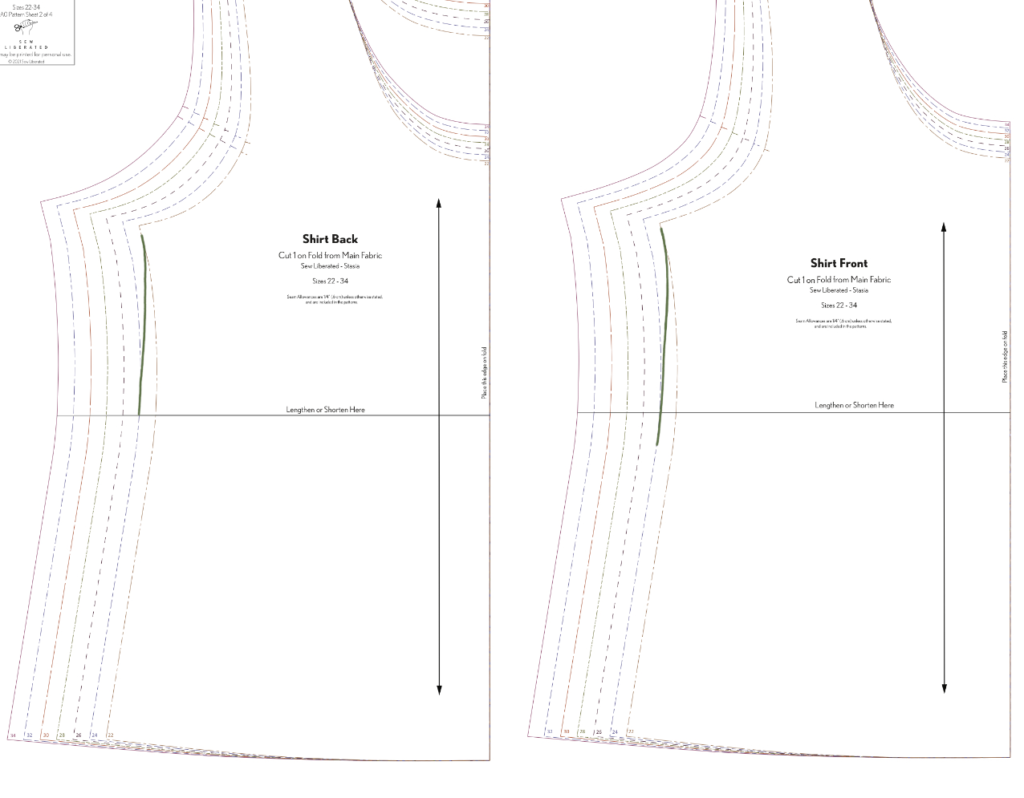
On a pair of pants with a more fitted waist, your size blending will look a bit like the pencil skirt. For a larger waist than hip, like this:
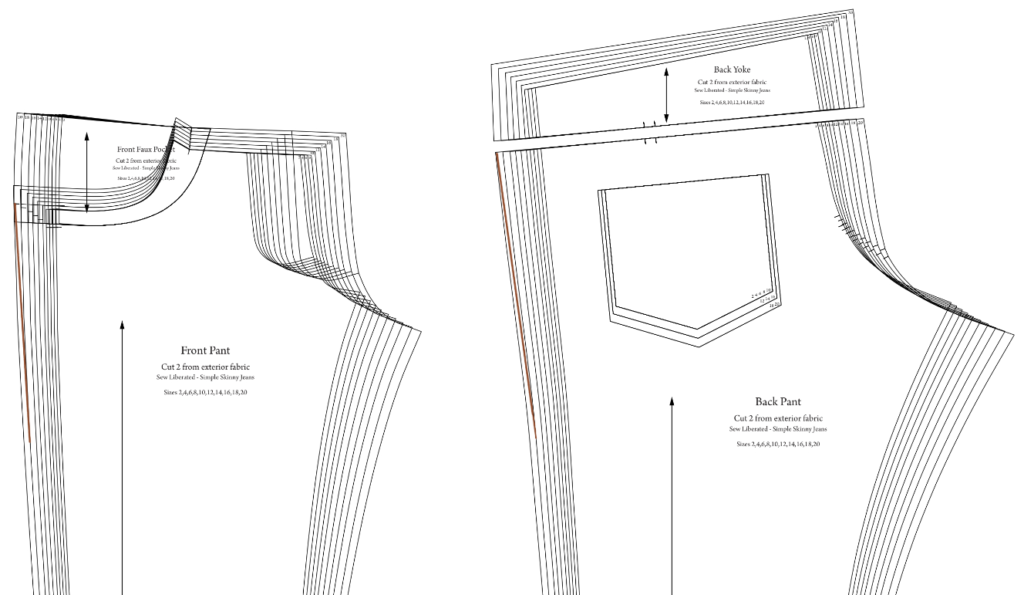
and for a smaller waist than hip, like this:
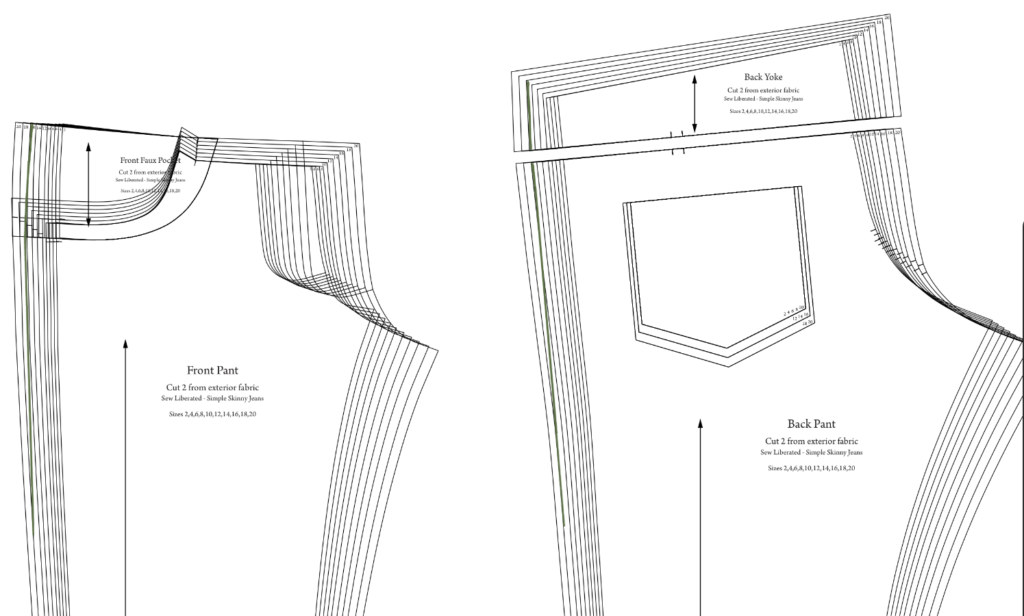
Make sure that you use the correct size for the waistband when you’re grading between sizes! The waistband should be the same size as the waist size that you used on the body pieces.
When it comes to shoulders, especially if the pattern has sleeves, a narrow or broad shoulder adjustment is usually more effective than blending between sizes.
Fitting has lots of subtleties, and I encourage you to start small and simply, and keep on learning. Take out books from the library to help you with your research. Your trials and errors will grow your experience and confidence over time, so don’t be afraid to make mistakes! As always, making a muslin or toile is advised, to check your fit changes and sewing techniques.


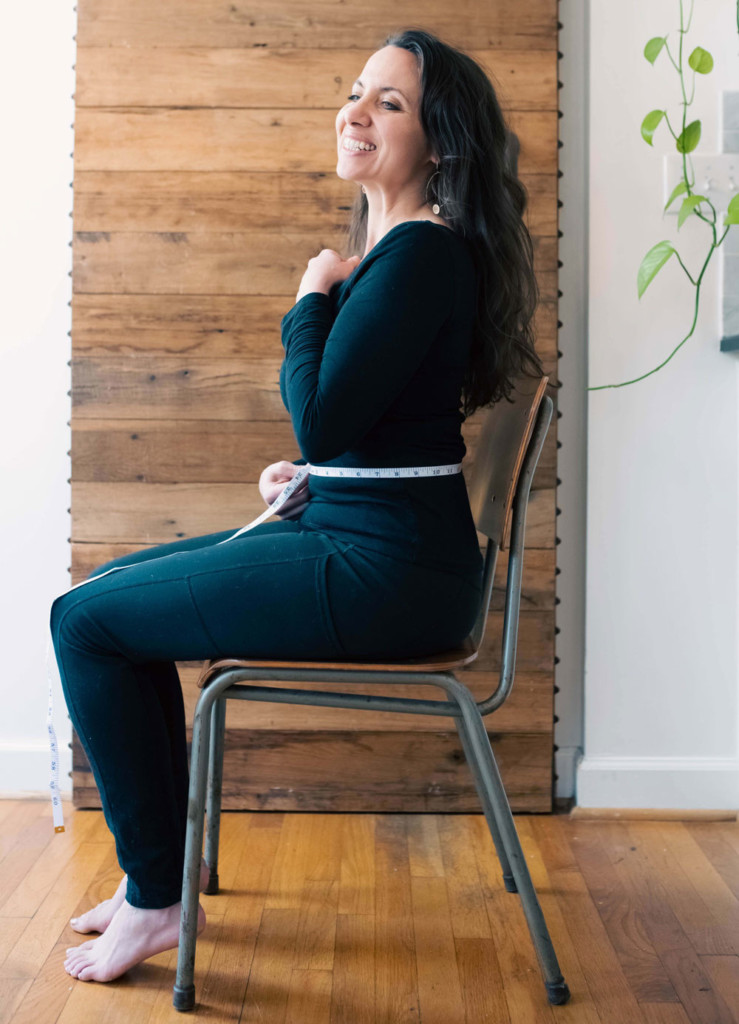
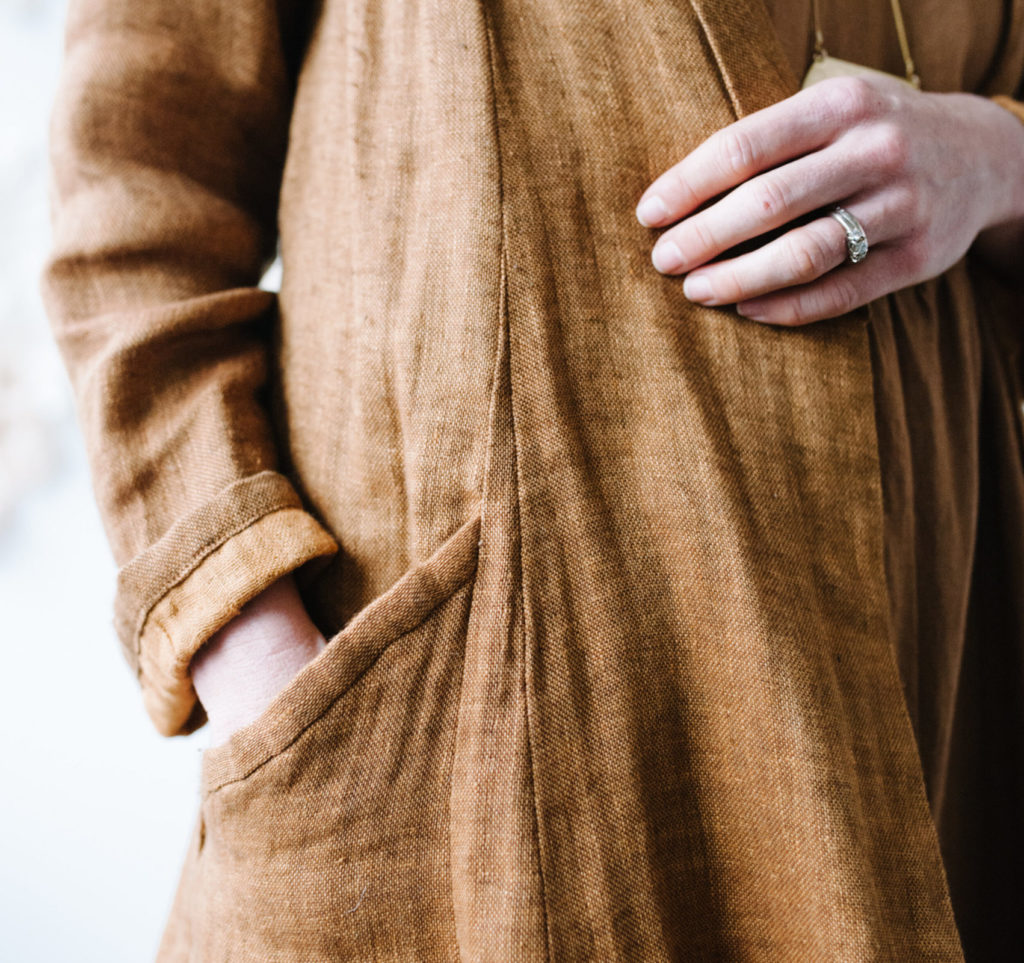
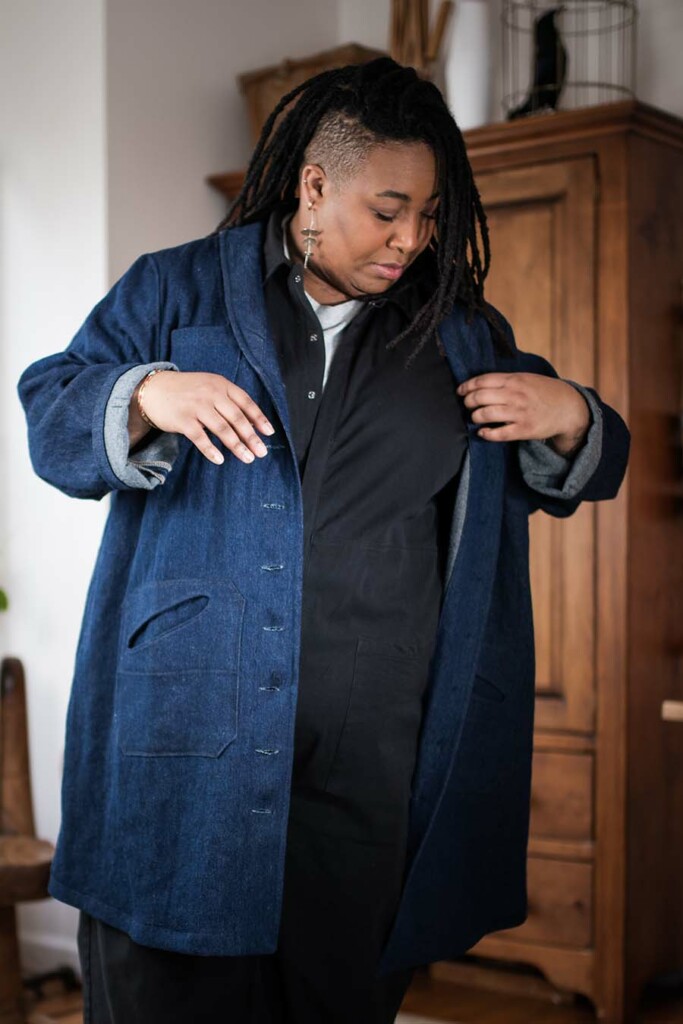
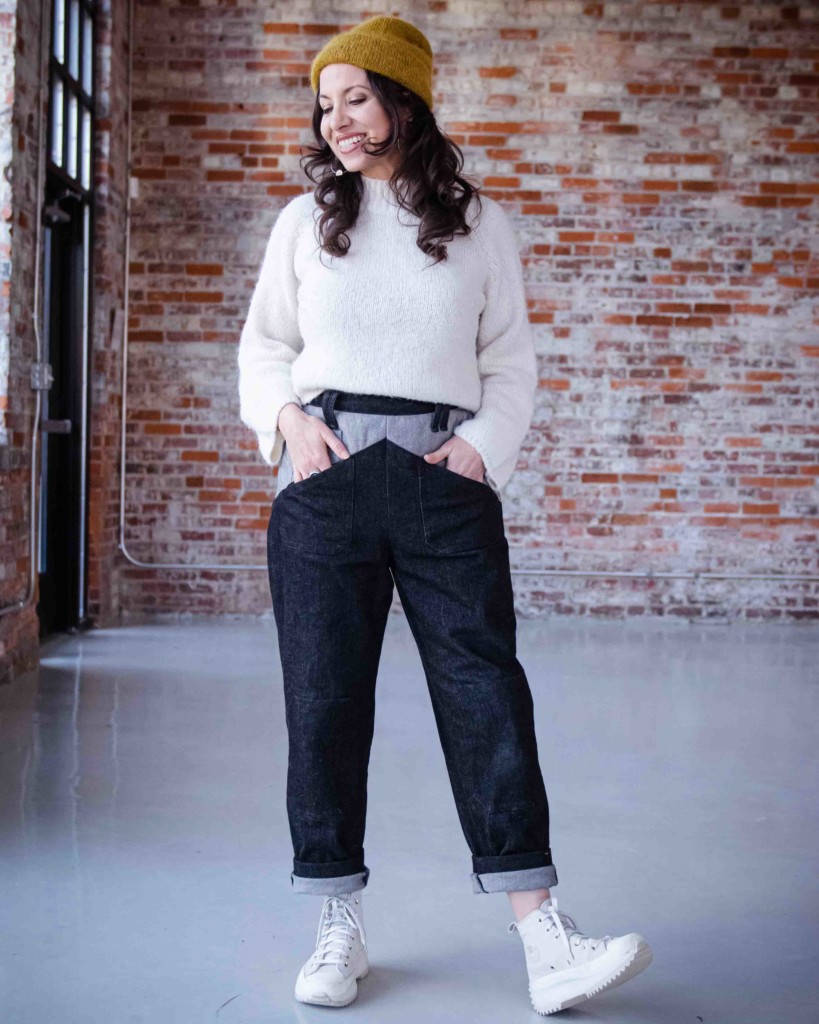
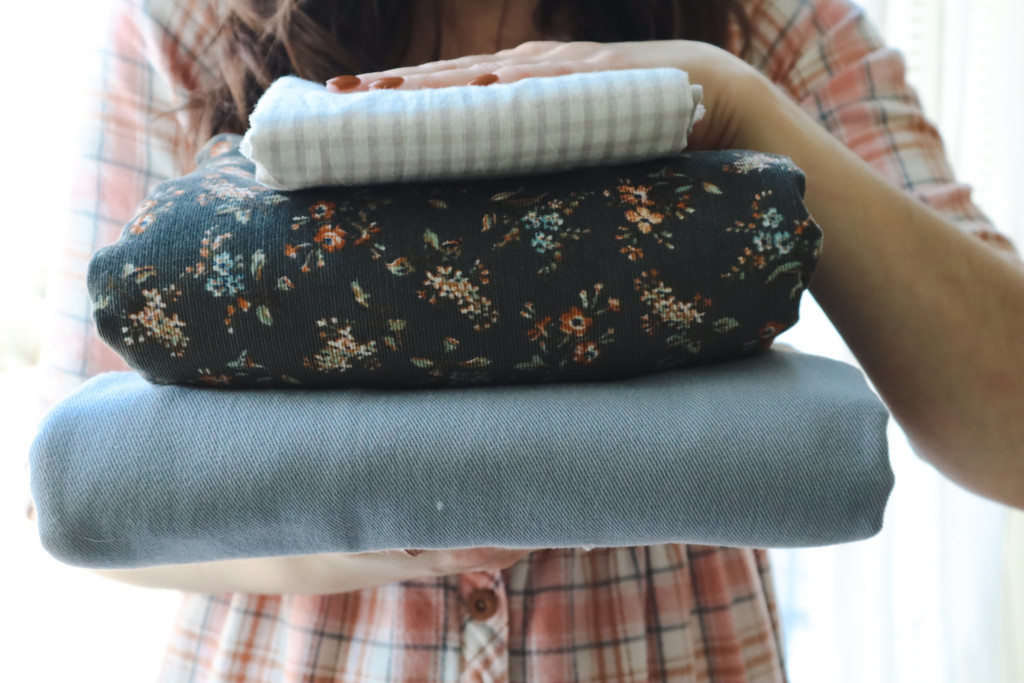
Wow Judith, thank you so much so this article. Very well written and great clear examples. I would be lying if I said learning to get a good fit for my body isn’t a bit daunting to me. I sense a lot of adjustments in my sewing journey, as I’m one of those who spans a couple of sizes with my measurements. Was feeling a bit frustrated this weekend reading the size ranges of some other pattern companies and how many adjustments I would have to make to get the designs to fit my body, but this helps me feel a bit renewed to not worry and take it one project at a time.
I’m so glad that it helps, Emmiline. It’s easy to forget that MOST people need to adjust patterns for a good, personalized fit, and that learning about fit is cumulative! One project at a time, you’ll gain experience and confidence, and practice helps so much!
This is such a helpful article. I’ve been sewing for over 40 years and never learned, or even tried, to adjust between sizes. The finished product worked out on some patterns, but not all of them. You’ve explained adjusting in simple steps, very clearly.
I’ve made a Metamorphic dress and finally got the bodice to fit correctly but the skirt of the dress seems just huge, can this pattern be graded to fit in a more flattering way? I have no problem taking it apart and adjusting it if the skirt can be successfully graded down to fit me better
Yes! Can you send me a message, @ommie , and I’ll help you work through it 🙂
Thank you! I’m going to do some re-measuring of myself and see if I can figure out how to grade down from the bust to the waist and then do the skirt at whatever size the waist is-the skirt is full enough that I feel like this will be the solution. A question though–the bust fits great, but the neckline gaps and the bodice shoulder seem to be almost at a point where they will fall off my shoulder-should I go down a size at the shoulder seam? I’m not sure how to do this measurement. I may try doing what I think would work in a muslin.
Sounds like a good plan! I just messaged you with a diagram that you might find helpful. And you know I’ll say YES to trying it out with a muslin 🙂
I got your message with the diagram-thank you so much! I’m goimng to give it a try when I can slow down enough to think it through.
Hi Judith, thanks for this information. Could you please clarify regarding blending pants if waist size is larger than hips. Does the crotch side get blended also? (or just one side). thanks so much
Great question! Yes, all of the vertical seams ending in the waist would be blended, with the crotch seam blending between the waist and the notches if possible. This will ensure that the finished waist of the garment does indeed end up matching with your chosen size.